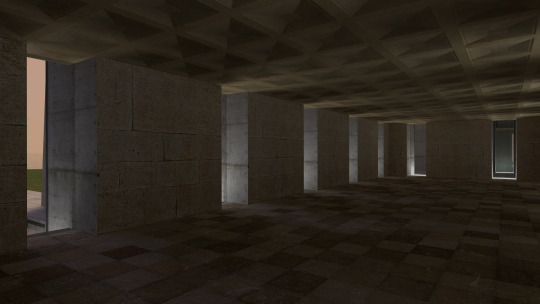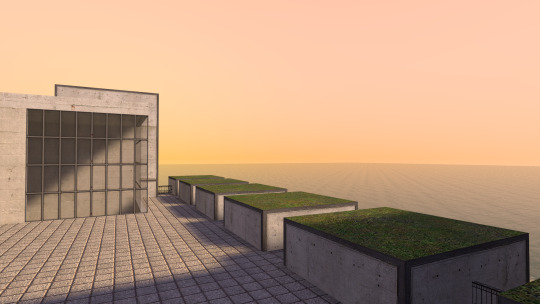#Structural engineers
Explore tagged Tumblr posts
Text
The Role of Structural Engineers in Safe and Effective Facade Restoration
From historic landmarks in Manhattan to contemporary structures in Brooklyn, every facade speaks to a moment in time. But like all things exposed to the elements and time, even the most beautiful building exteriors begin to wear down. This is where the expertise of structural engineers becomes vital—especially in the complex and high-stakes world of facade restoration in New York.
Facade restoration isn't just about refreshing the appearance of a building. It's a structural and safety necessity. In a bustling metropolis like New York, ensuring that aging buildings meet safety standards while preserving their character requires precision, planning, and experience. That's where structural engineers come in.

Why Structural Engineers Are Essential in Facade Restoration
Structural engineers play a role in diagnosing, planning, and executing restoration strategies that maintain a building's integrity and protect the public. A well-qualified engineer doesn't just look at what's visible—they investigate what lies beneath. Cracks, water infiltration, shifting foundations—these issues aren't always apparent to the eye, but they can compromise an entire structure.
Using principles of facade engineering, structural engineers evaluate whether a building's exterior is still performing its job: keeping moisture out, bearing loads, and providing thermal efficiency. They assess materials, pinpoint structural weaknesses, and recommend restorative solutions that ensure long-term safety and durability.
Balancing Aesthetics and Safety
New York City's rich architectural diversity adds another layer of complexity to facade restoration. Many buildings—especially pre-war and historic structures—require a restoration approach that respects their original design and architectural integrity. Structural engineers collaborate closely with architects, preservationists, and contractors to restore facades without compromising the building's visual integrity.
This means that while repairing masonry, replacing corroded steel, or restoring terra cotta details, engineers are also ensuring that safety comes first. Their job is to make sure beauty doesn't come at the cost of stability.
The Legal Landscape of Facade Maintenance in NYC
New York is one of the few cities in the United States that mandates regular facade inspections for buildings over six stories high. Local Law 11, also known as the Facade Inspection and Safety Program (FISP), requires buildings to undergo inspections and repairs every five years. Structural engineers play an important role in conducting these inspections, issuing reports, and overseeing repairs when hazards are identified.
This law exists because neglect can lead to tragedy—falling masonry or debris from poorly maintained facades can endanger lives. Engineers certified under this program are trained to spot red flags and execute solutions before issues escalate.
Engineering the Future of Urban Safety
In a city constantly evolving, facade restoration engineering continues to advance. New tools such as drones, 3D scanning, and infrared technology allow engineers to inspect facades more accurately and efficiently. However, while the tools may evolve, the role of the structural engineer remains the same: to safeguard the built environment while preserving its legacy.
Whether it's a brownstone in Brooklyn or a towering high-rise in Midtown, facade restoration in New York demands a collaborative approach, and it starts with a structural engineer who understands both the science of safety and the art of preservation.
Structural engineers are more than just technical experts, they are guardians of cityscapes. Their role in facade engineering ensures that buildings not only look their best but also function as safe, sound, and sustainable parts of the urban fabric.
If your building is due for an inspection or showing signs of exterior damage, don't wait. In a city like New York, where history and progress go hand in hand, having the right structural engineering team can make all the difference in your facade restoration journey.
#Structural Engineers#facade restoration in New York#facade restoration#facade engineering#restoration engineering#structural engineering
0 notes
Text

"Khan Was a Visionary Who Transformed Skyscrapers into Sky Cities While Staying Firmly Grounded in the Fundamentals of Engineering."
— Mark Sarkisian


#Structural Engineers#Notable Structural Engineer#The Einstein of Structural Engineering#Fazlur Rahman Khan#Bangladesh 🇧🇩#Pakistan 🇵🇰#Calcutta#Dhaka#Karachi#Government of Pakistan Scholarship#East Pakistan 🇵🇰 (Now Bangladesh 🇧🇩)#West Pakistan 🇵🇰#Jeddah Saudi Arabia 🇸🇦
0 notes
Text
Best Structural Engineers in India- Building the Nation’s Foundations
Structural engineering is the backbone of any construction project, ensuring that buildings and infrastructure are safe, efficient, and durable. India, with its rapidly growing cities and ambitious infrastructure projects, is home to some of the finest structural engineers who have contributed to iconic projects across the globe. Here’s a look at the best structural engineers in India, their…
0 notes
Text
Structural Engineers for Residential Homes
EEI Engineering & Inspections provides top-notch structural engineering services for residential homes. Our skilled engineers specialize in structural evaluations, foundation inspections, and custom design solutions to ensure your home’s safety and durability. Choose EEI for expert residential structural engineering you can count on.
0 notes
Text

What Does a Structural Engineer Do? | Structural Engineers
Discover the role of a structural engineer, their responsibilities, and how they ensure the safety and stability of buildings and structures.
0 notes
Text

The Unsung Heroes: The Role of Structural Engineering in Our Built World
Structural engineers are the masterminds behind the bones of any structure. The world around us is a marvel of human ingenuity.
From towering skyscrapers to graceful bridges and cozy homes, these structures stand tall, providing shelter, facilitating transportation, and shaping our skylines.
But have you ever wondered about the invisible force behind their stability and strength?
Enter the world of structural engineering, the silent partner in creating the built environment we interact with every day. https://www.moldtekengineering.com/services/civil/steel-detailing/
0 notes
Text
Structural Engineers in Nagarbhavi
Strarcon offers top-notch structural engineering services in Nagarbhavi, catering to diverse construction needs. Our team of highly skilled structural engineers is dedicated to delivering innovative and sustainable solutions that exceed client expectations.
At Strarcon , we prioritize quality and efficiency in every project we undertake. Our structural engineers combine technical expertise with creative thinking to design robust and cost-effective structures. Whether it's designing residential buildings, commercial complexes, industrial facilities, or infrastructure projects, we ensure structural integrity and safety while optimizing resources.

We specialize in various aspects of structural engineering, including structural analysis, design optimization, seismic retrofitting, foundation design, and more. Our approach integrates the latest industry standards and advanced technologies to deliver solutions that withstand the test of time.
Client satisfaction is our top priority, and we work closely with clients, architects, and contractors to understand project requirements and deliver results that meet or exceed expectations. With a commitment to excellence and a focus on innovation, Strarcon 's structural engineering services in Nagarbhavi stand out as a reliable choice for projects of any scale or complexity. Contact Strarcon today for expert structural engineering services that blend technical expertise with practical solutions, ensuring the success of your construction projects in Nagarbhavi and beyond.
#Structural Engineers in Nagarbhavi#Structural Engineers Nagarbhavi#Structural Engineers#Engineers in Nagarbhavi
0 notes
Text

Structural engineers in Brisbane, Queensland help to keep the site safe for everyone. Their help can help keep people working on the site and structure itself safe.
0 notes
Text
Empowering Construction Projects with Expert Structural Engineers in Leicestershire
Introduction: Welcome to LRBS, your trusted partner for top-notch structural engineering services in Leicestershire. As construction projects evolve, the demand for skilled professionals becomes paramount. LRBS stands as a beacon of excellence, providing tailored solutions through our team of expert structural engineers Leicestershire.
Why Choose LRBS for Structural Engineering in Leicestershire: LRBS takes pride in its commitment to delivering unparalleled structural engineering services. Our team of seasoned professionals combines innovative solutions with a deep understanding of local construction regulations in Leicestershire. Here's why LRBS stands out:
Local Expertise:Our structural engineers are well-versed with the unique challenges posed by Leicestershire's diverse landscape. This local knowledge ensures that every project adheres to regional specifications, guaranteeing compliance and success.
Innovative Solutions: LRBS employs cutting-edge technology to provide innovative and sustainable structural engineering solutions. From conceptualization to implementation, we prioritize efficiency and durability in every project we undertake.
Tailored Approaches: Understanding that no two projects are the same, LRBS offers customized structural engineering services. Whether it's residential, commercial, or industrial, our team adapts to the specific needs of your project, ensuring optimal results.
Regulatory Compliance: Navigating the complex web of construction regulations is made seamless with LRBS. Our structural engineers ensure that your project not only meets but exceeds all necessary regulatory requirements in Leicestershire.
Timely Delivery: LRBS values your time and strives to meet deadlines without compromising on quality. Our streamlined processes and efficient project management guarantee timely completion of every structural engineering project.
Conclusion: LRBS stands as your reliable partner for structural engineering in Leicestershire. With a team of dedicated professionals, innovative solutions, and a commitment to excellence, we are poised to elevate your construction projects to new heights. Trust LRBS for all your structural engineering needs in Leicestershire – where expertise meets innovation.
0 notes
Text
Why Construction Drawing is Essential for Obtaining Building Permits?
Construction drawings are essential for effective communication, precision in construction, code compliance, and obtaining the necessary approvals for building permits.
#construction drawing#building permits#structural engineers#drafting services#construction blueprints#drafting companies
0 notes
Text
WHAT IS STRUCTURAL ENGINEERING AND WHAT DO STRUCTURAL ENGINEERS DO?

Structural engineering is a specialized field within civil engineering. It focuses on using the principles of physics, mathematics, and real-world experience to create safe and reliable designs for the essential supporting elements of human-made structures. Nowadays, it’s backed by a vast and comprehensive body of knowledge that allows us to precisely anticipate how various shapes and materials will perform under different types of stress and pressure. Interestingly, these principles have been applied for millennia, as seen in the construction of iconic ancient structures like the pyramids in Egypt and the Acropolis in Greece.
WHAT DO STRUCTURAL ENGINEERS DO?
Structural engineers are trained professionals who are responsible for making sure that the structures we use in our daily lives, like bridges and tall buildings, are safe, and stable and don’t collapse under applied loads. They do this by applying their technical knowledge to specify different types of construction materials in various shapes and geometries and design structures that can withstand the pressures and stresses of their environment such as gravity loads, storms, and earthquakes.
In my role as a structural engineer, I collaborate closely with clients to grasp the project’s purpose, ensuring a secure, feasible, and cost-effective solution for its successful completion. Typically, the structural design process for a building can be segmented into three key stages: load calculation, structural analysis, and design.
Industry standards and building codes guide the estimation of factors like structure weight and potential loads from elements such as snow, wind, and seismic activity for a building’s specific function. After identifying these loads, structural engineers conduct a thorough analysis to evaluate their impact on individual structural elements. Specialized software is often used to analyze various types of structures, with a recommendation to validate the software-generated results using fundamental engineering principles and basic structural analysis formulas. The forces and stresses derived from this analysis software are then utilized to design critical structural elements, including the floor system, vertical supports, foundations, and other vital components of the building.
As a dedicated structural engineer, I prioritize the safety of the public. In relation to the buildings and infrastructure integral to our society, the potential consequences of a structural failure can be devastating. This is why safety factors are incorporated into structural designs, accounting for uncertainties in load assumptions and unexpected deficiencies in construction materials or workmanship.
WHERE DO STRUCTURAL ENGINEERS WORK?
Structural engineers are engaged in projects where there are plans to alter a building’s use, add additional floors, or implement significant expansions. It’s crucial to note that making alterations to any structural component without consulting a professional engineer can lead to severe damage or, in some cases, partial or complete collapse of the building.
Additionally, structural engineers are called upon when structural damage arises from sources like fire, corrosion, environmental degradation, impact, or other forms of wear and tear. These issues can potentially weaken a structure’s capacity and present a threat to public safety. When approached for an assessment of an existing building, a structural engineer conducts a visual inspection, evaluates the load-bearing elements’ integrity, addresses concerns about occupant safety, recommends repair methods, and provides structural details to restore the structure to its original state, capable of withstanding applied loads.
ARE ARCHITECTS & ENGINEERS THE SAME THING?
No, architects and engineers play distinct yet crucial roles in the design of a building. For instance, in a residential building, if the aesthetics are pleasing and the interior spaces feel inviting and comfortable, credit goes to the architect for a well-designed building. On the other hand, the work of the structural engineer is evident in ensuring the structure remains stable under various loading conditions. Regardless of external factors like wind or heavy snow, the building remains secure, providing a safe and comfortable environment for occupants.
In summary, structural engineering is indispensable in a society dependent on various structures. Engineers, especially those specializing in structural engineering, hold a vital role in prioritizing public safety and welfare. Their duty is to ensure the best interests of the community are always at the forefront. If you have any questions regarding structural engineering, please feel free to leave a comment below!
Contact us at (718) 886-4444 today or Use our quote form to submit all details of your project. Get your Free Estimate – https://nycerny.com/quote/
1 note
·
View note
Text
How Structural Engineering Innovations Are Shaping Modern Healthcare Facilities
Functional flexibility has become a key focus in structural engineering for modern healthcare facilities. As medical technologies, patient demands, and care delivery models rapidly evolve, healthcare buildings across the nation, from New York to California, must be able to adapt. Structural engineers employ innovative strategies to design adaptable structures that can accommodate future expansions, renovations and retrofits with minimal disruption.
Modular and prefabricated construction methods are enabling greater flexibility in structural design. Using interlocking structural modules, engineers can reconfigure or expand hospital spaces by adding or rearranging units. Offsite prefabrication also allows for faster construction and easier modifications than conventional building. Structural engineers optimize module size and connections to streamline future changes to layouts or floorplans.
Designing flexible structures with open floor plans is another essential strategy. Long-span beams, trusses, and integrated structural systems allow large open spaces to be modified through non-structural interior partitions. Column-free interiors provide unobstructed space for efficient workflow and future adaptation. The strategic placement of vertical circulation and other fixed building elements also prevents the restriction of future layouts.
Structural engineers can identify optimal structural schemes to enable multi-purpose, flexible hospital spaces by modeling and simulating different usage scenarios. While meeting current needs, these innovative structural solutions ensure healthcare facilities remain adaptable for the future.

Resilient and Robust Structures
Modern healthcare facilities must be designed to withstand natural disasters and continue operating during emergencies. Structural engineers employ innovative techniques to create robust buildings that protect human life and critical infrastructure.
Earthquake engineering is essential for facilities in high seismic zones. Design approaches like base isolation systems decouple the building from ground motions, while reinforced concrete and masonry provide lateral strength. Ductile detailing and dampening systems absorb seismic energy, preventing structural failure. Hospitals rely on emergency power, so structural hardening of generator rooms and anchoring fuel tanks are critical.
Redundant structural and MEP systems ensure hospital operations continue uninterrupted during emergencies. Separating critical systems like backup power and having redundant routes for distribution make them resilient to damage. Essential medical facilities may have dedicated earthquake-resistant cores housing critical building services.
Advanced seismic monitoring and early warning systems allow time to implement emergency protocols before an earthquake strikes. They enable pre-emptive actions like halting elevators, securing equipment, and preparing staff. Real-time structural health monitoring provides rapid notifications if damage occurs.
Flood mitigation strategies are equally important for hospitals in vulnerable regions. Perimeter floodwalls, elevated critical systems, and waterproofing can minimize inundation risks. Hurricanes require fortified building envelopes and robust roof connections to withstand high winds.
Ultimately, a resilient structural design is focused on saving lives, maintaining care delivery, and avoiding operational disruptions during disasters. Redundancy, robustness, and rapid response are key engineering strategies.
Optimized Foundational Systems
A healthcare facility's foundation and structural layout directly impact space utilization efficiency and the integration of essential building services. Structural engineers optimize foundational systems in modern hospitals and medical centers with the following design strategies:
Creating column grids and bay sizes that maximize functional floorplates. Structural columns and lateral bracing systems are positioned to delineate clear and logical areas for clinical functions while avoiding impeding workflow.
Developing efficient structural framing that maximizes ceiling heights. Higher floor-to-floor dimensions enable the integration of mechanical systems and provide sufficient overhead space for medical equipment.
Designing service shafts and vertical circulation cores to consolidate plumbing, electrical, ventilation, and other infrastructure. This facilitates installation and maintenance while freeing up usable floor area.
Allowing adequate transfer slab and foundation capacities for heavy MRI machines, radiotherapy equipment, and other healthcare apparatus. Structural systems account for concentrated equipment loads of 5,000 lbs/sq ft or more.
Engineering long, column-free structural spans to create flexible open spaces. This supports efficient department layouts and clear sightlines for improved clinical observation.
Incorporating modular structural grids that allow for change and expansion. Uniform spans and bays enable the reconfiguration of spaces as clinical needs evolve.
By optimizing the structural foundation, engineers create resilient healthcare facilities tailored to the specialized needs of modern medicine, with efficient spaces that integrate essential services while accommodating heavy equipment loads.
0 notes
Text

Structural Engineer Foundation Inspection
Safeguard Your Property: Ensure long-lasting stability with our structural engineer foundation inspection services. Your property deserves the best! Reach us at (469) 290-2585 for more info.
#structural engineer foundation inspection#foundation engineer inspection#foundation leak repair#structural engineers
0 notes
Text










gm_palace_of_peace
created by Tryptophyl
#source engine#garry's mod#gmod#half life 2#sandbox#hearted#sorry for the uptick in big fuck-off concrete structures i've recently been bought off by the brutalist lobby
318 notes
·
View notes
Text

What Does a Structural Engineer Do? | Structural Engineers
Discover the role of a structural engineer, their responsibilities, and how they ensure the safety and stability of buildings and structures.
0 notes